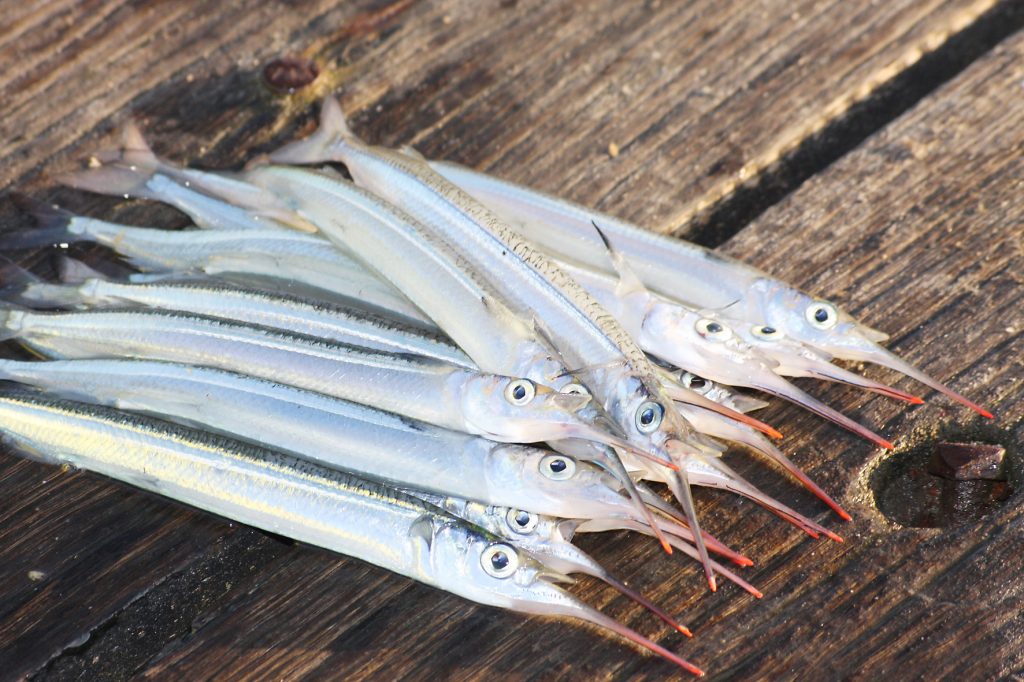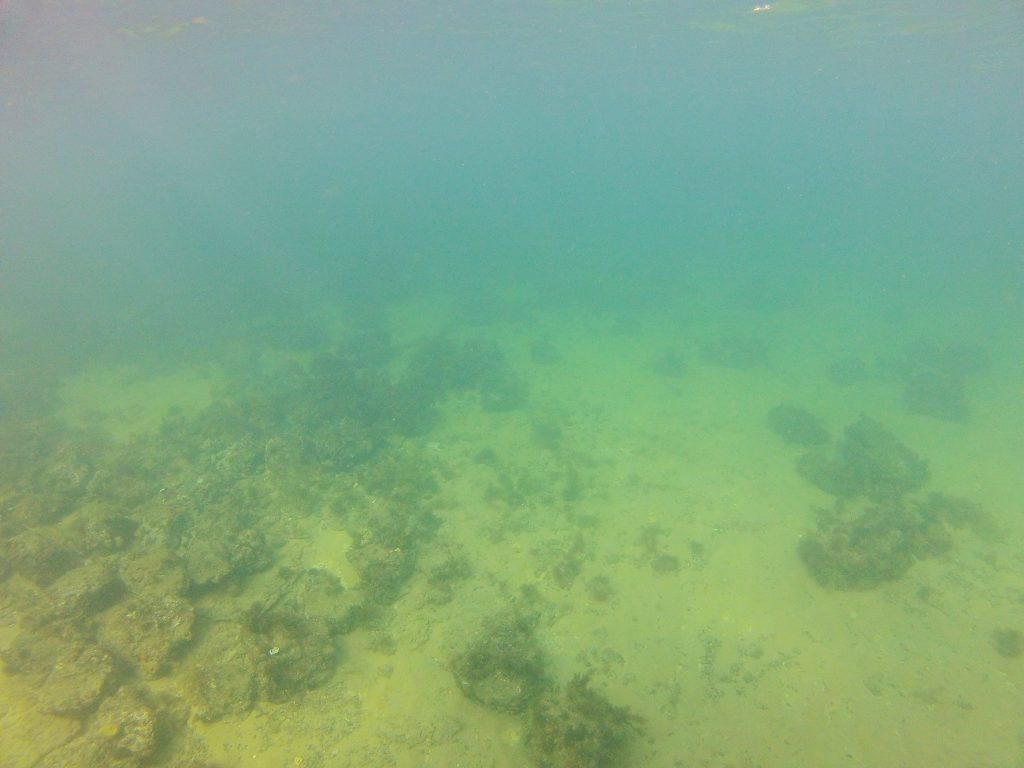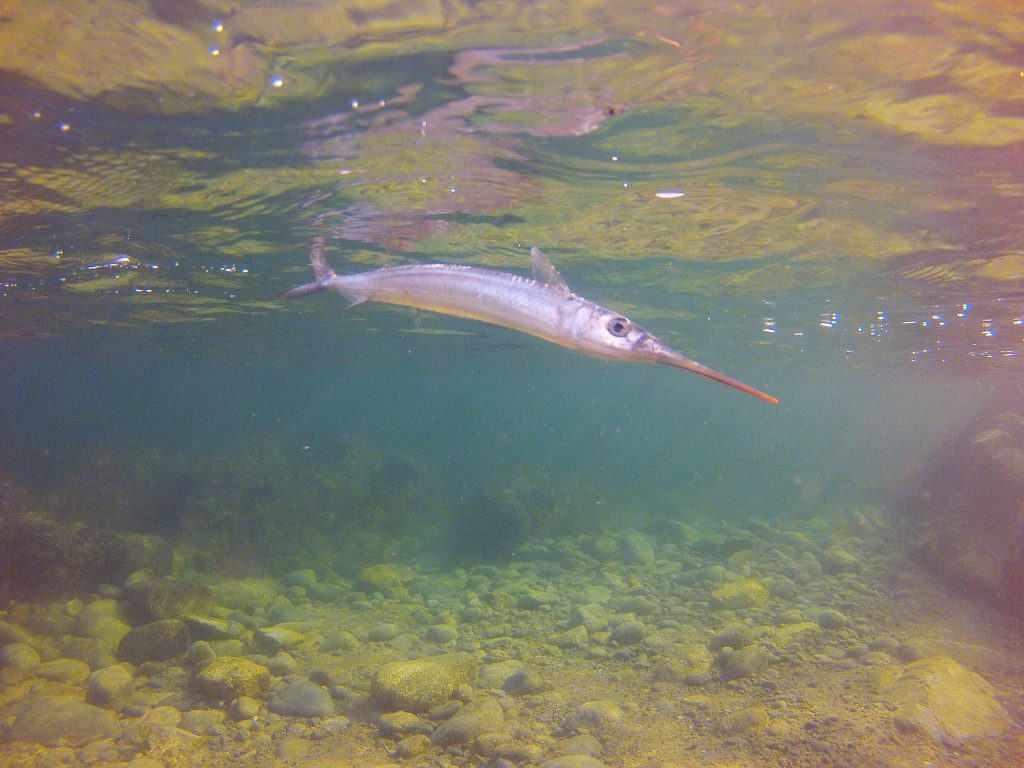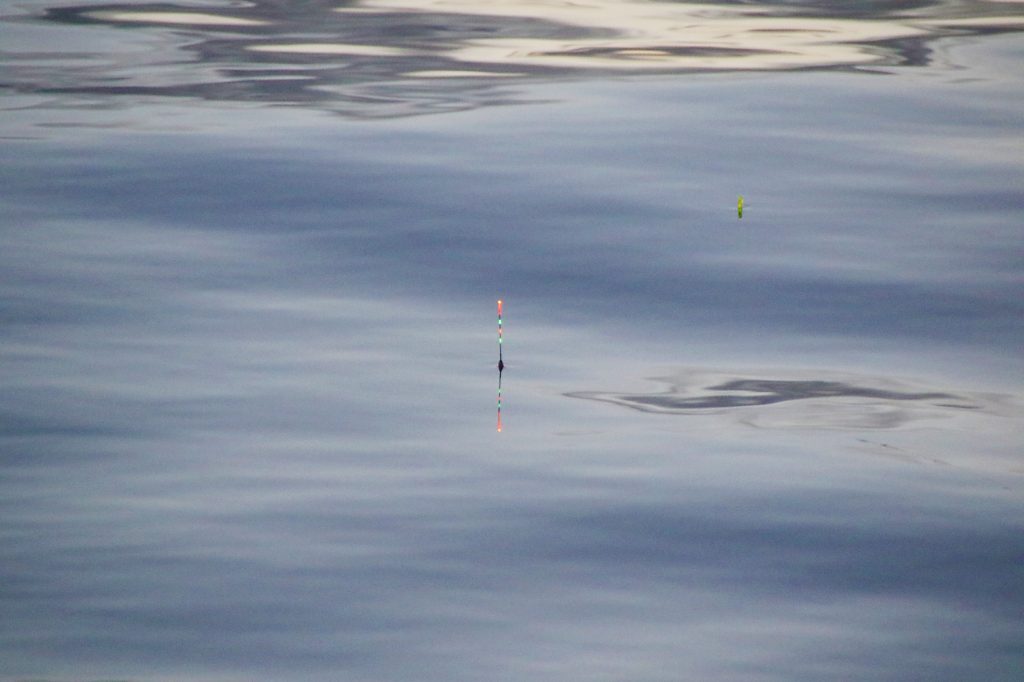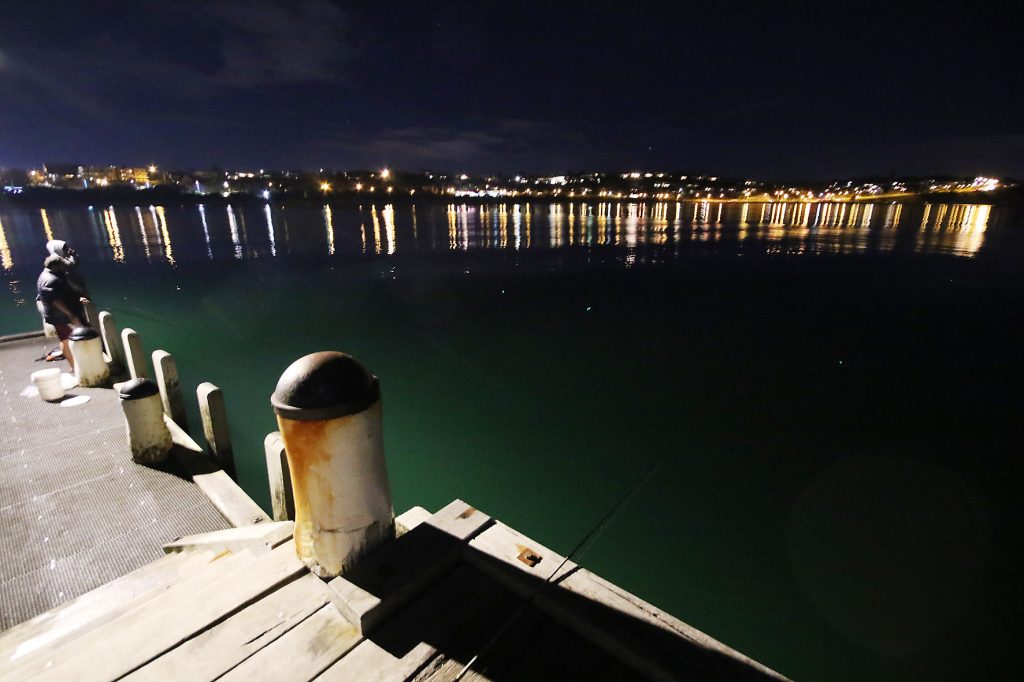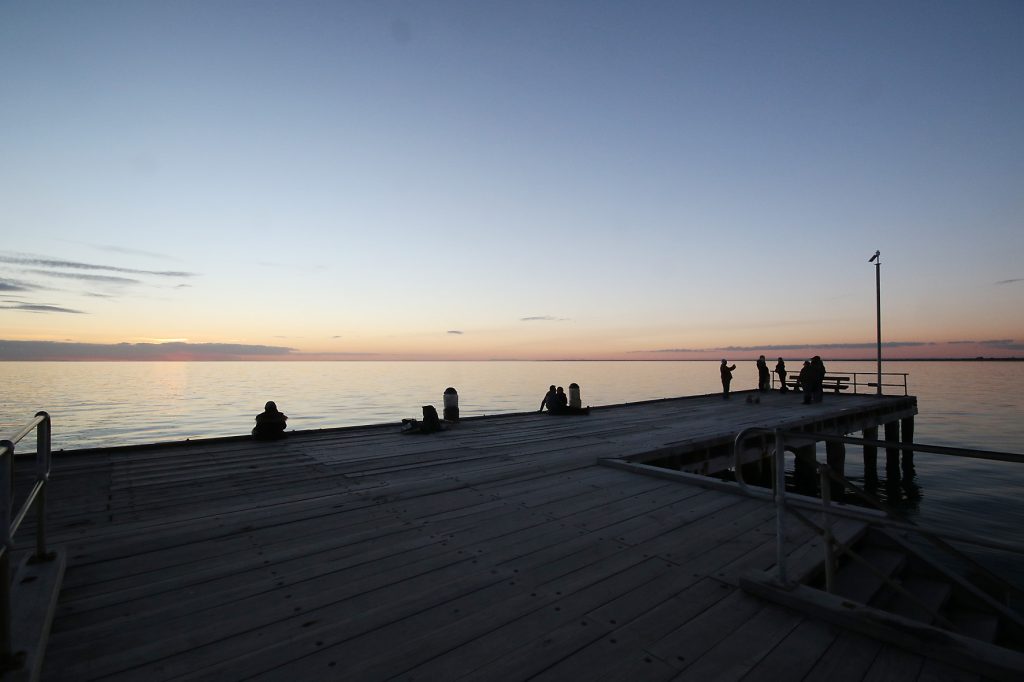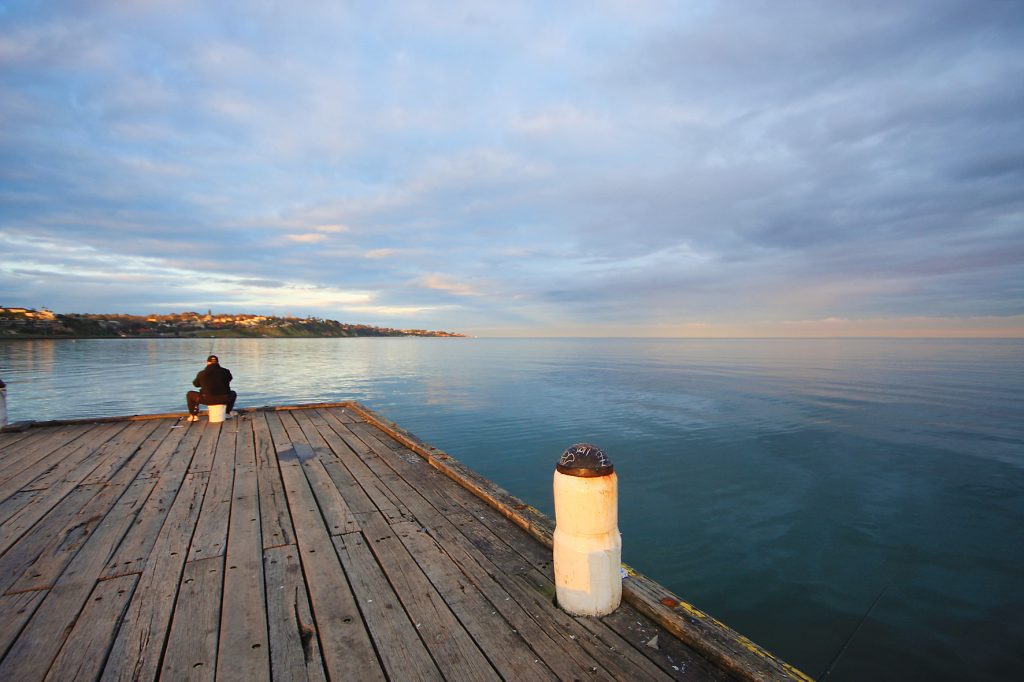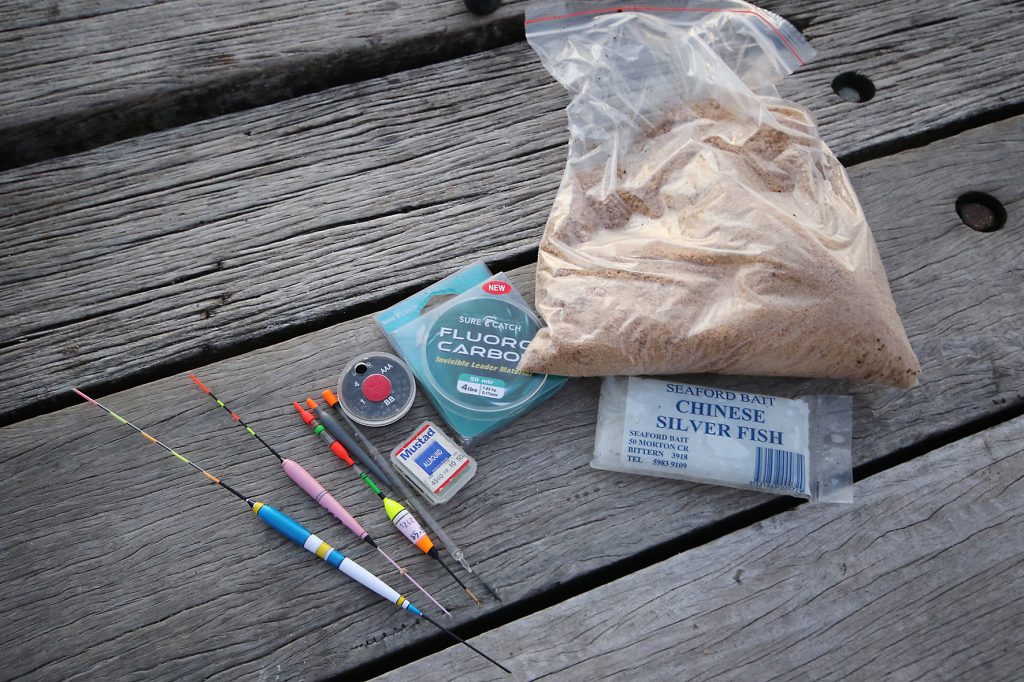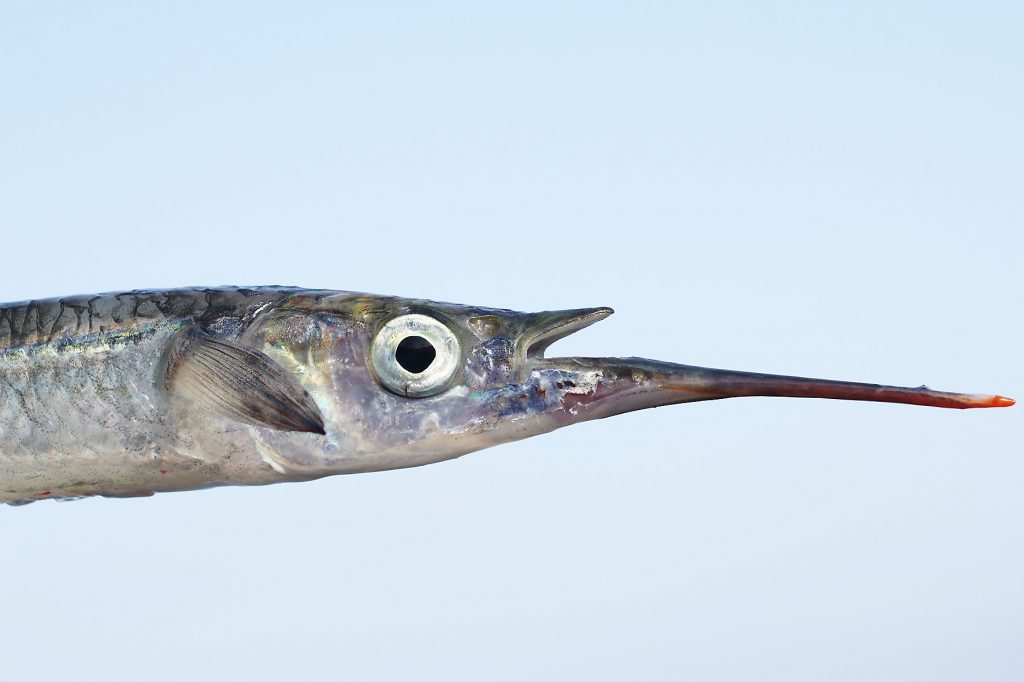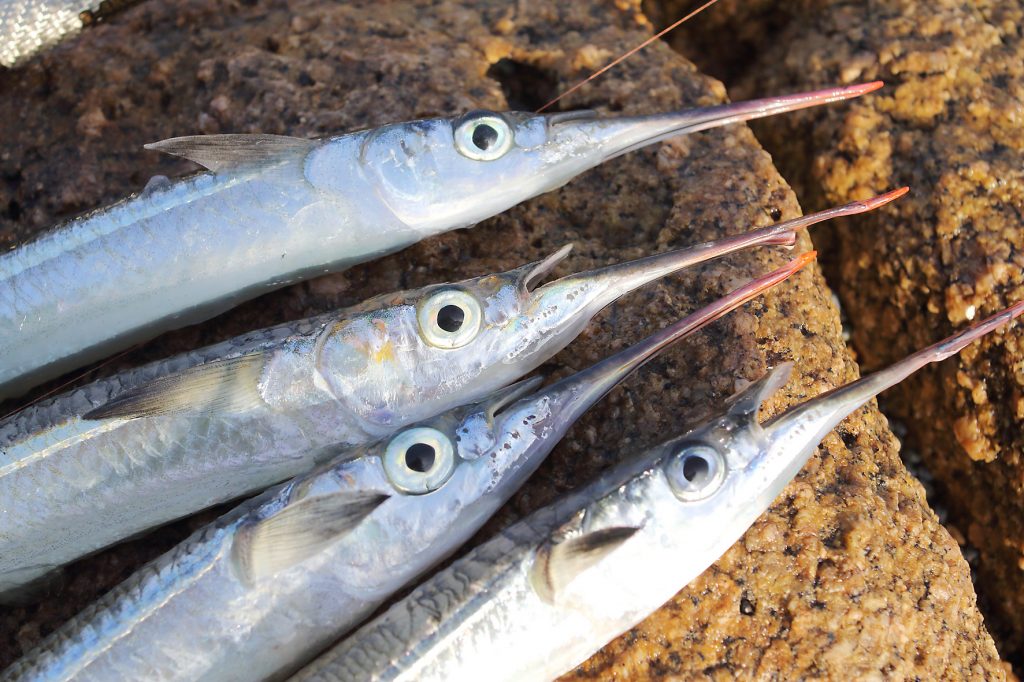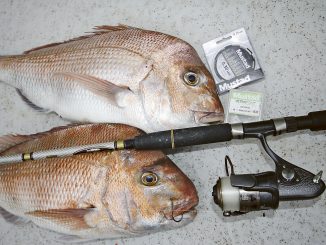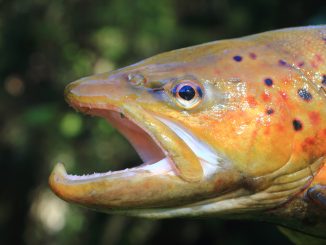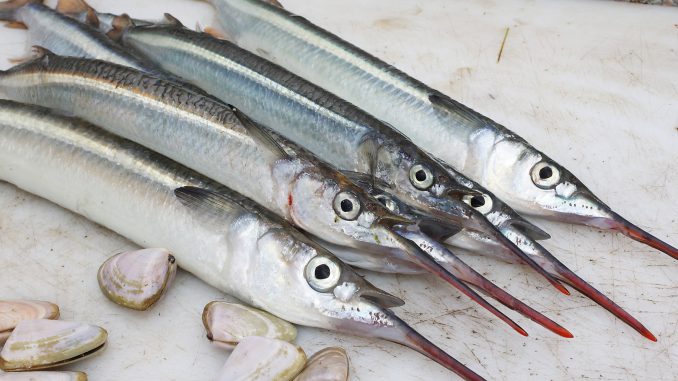
by Jarrod Day •
The humble garfish is a readily available species year-round and doesn’t often get the kudos it deserves. Often underrated, what they lack in fight they make up for on the table and as a prime fresh bait when seeking highly prized species such as snapper, mulloway and the like.
Garfish are great fun to catch for anglers of all levels of experience and, best of all, you never just catch one – more like a whole bunch.
LOCATIONS
Garfish frequent every piece of water in Port Phillip Bay including the Yarra, Paterson and Werribee rivers. They’re around every rocky headland, pier and jetty around the bay. A schooling fish by nature, garfish move about and occasionally where you caught them one week, they might not be there the next. However, when they are about in numbers it can be difficult to fish with multiple rods as the school can be quite significant in size.
For the most part, they are easily accessible for land-based anglers fishing from the many jetties around the bay and they really take very little effort to catch.
If you are looking for a specific pier to try, Queenscliff, St Leonards, Altona, Brighton, Sandringham, Beaumaris Bay, Seaford, Frankston, Rye, Rosebud, Sorrento and Portsea piers are all worthy locations. These piers always attract garfish, both at night and during the day, but it’s during the high tides when they are more abundant and close to these piers and jetties.
When the gars are about in numbers, some piers and jetties around the bay get overrun by anglers and at times it can be standing room only. If you’re planning on taking the family, you might just have to get there early and grab a spot. If you’re heading out on your own, you might want to try exploring nearby areas by walking around and fishing from the rocky headlands. Doing this is often more productive as the fish won’t be as skittish as they are near a pier full of anglers.
BAITS ‘N’ BERLEY
Garfish have an extremely small mouth and seldom take large baits. Their lower jaw extends past their top jaw, so big baits are often passed up for something more manageable. While their diet mainly consists of eelgrass and algae, they also eat various types of water insect and small crustaceans. Anglers targeting garfish these days use a verity of baits including dough, pieces of peel prawn segments and Chinese silverfish. Though these can be quite big baits, cutting them down into the smallest of pieces works best. The smaller you can cut them up, the more hook-ups you’ll have.
Being a schooling fish, when you attract them to an area they are usually thick in numbers. Berley is the key, but it’s important that you don’t overdo it. Use too much berley and they won’t look at your bait, too little and you won’t get the desired result. In an ideal world, berley should be thrown into the water by hand at regular intervals and this will keep the trail consistent, bringing them into casting range.
There are many different types of berley to use. Over the years I have targeted and caught garfish, the Bait Mate premix with added fish oils has been the most effective. Combining a fine pollard with fish oil creates an extremely fine trail that brings the schools of fish in from far and wide. Given its light weight and small diameter, the premix can easily flow with the current as well as create an oil slick on the surface. The smell in the water really gets them going and providing you continue to cast baits into the trail, you’ll be sure to catch a quarry.
GARFISH GEAR
Given the fact that the majority of garfish you’ll catch might only weigh 100-200g, light tackle is a must. There are two main outfits to use for gars, and the first has been around for the best part of over 50 years.
Some thirty years ago down at Portsea Pier, my old stomping ground, on any given Saturday or Sunday, a dozen or so regular ‘older’ gentlemen would be sitting on their 20L white buckets with 16-20’ telescopic poles in hand. Once their float bobbed under the water surface, up would come a flickering garfish right into their hands and into the bucket in the blink of an eye. The old-fashioned “Wog Pole” did the trick and is still widely used today but is becoming less popular.
A standard light 702 Nibble Tip works a treat these days with a small 1000 size reel, 6lb braid and 4lb leader. Any heavier leader and the freely floating bait will look unnatural as it sinks, so go as light as you possibly can.
Rigs are simple and don’t need to be too complex. Garfish are a mid to topwater feeders, so you need to suspend the bait just below the surface. This is achieved by using a float, but not just any float. Often I see a range of floats being used for targeting gars and I swear some angler miss a lot of fish by using the wrong float.
Big bulky oval or round floats make it too hard for the small gars to pull under the water and bites might go unnoticed even then, when the fish tugs on the hook. The buoyancy of the float could dislodge the hook. A pencil float is just perfect given its smaller profile. After being weighted correctly with a few split shot sinkers, the pencil float can easily be pulled under the water with limited effort and prevent hooks from dislodging from the fish.
When you are rigging up it is also important to use the right hook. Remember a garfish’s mouth is very small, so use small hooks and when they inhale the bait, small hooks can go right down their throat and be difficult to get back out.
This particular hook is a long shank hook with half the gauge of a standard long shank. To go one better, the gape is offset, allowing the fish to hook themselves without angler assistance. This is a huge benefit, as it will prevent you from pulling the bait away from the fish or pulling the hook out of the fish on the strike.
TECHNIQUES
While there really isn’t too much to catching garfish, there is one very important tactic to note. Garfish tend to feed at different depths and although they mainly feed near the surface, a bright sunny day could see them feeding lower near the bottom. It all depends on the day and how they are reacting to angler’s offerings. The trick here is to watch other anglers that are catching them and note the distance between their float and hook.
Once you have this right, you should be on target. The next key is knowing exactly when to strike. As mentioned earlier, bulky floats will prevent you from seeing the bites. With the right weighted float, the split second you see the float dip below the surface, that’s the instant you should pull up on the rod tip to firmly set the hook. Knowing just how much will be the difference between hooking a fish or pulling the bait out of its mouth, so a little gentle flick will be enough.
Gar fishing is a whole lot of fun and because the action is fast when they are about, they quickly become addictive. Best of all they are quite easy to catch and can provide a tonne of entertainment for the entire family.

